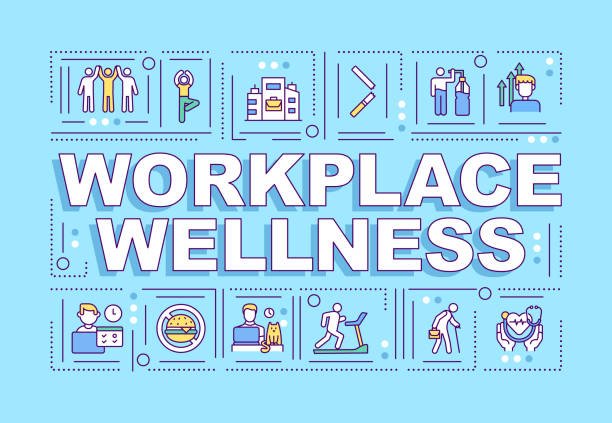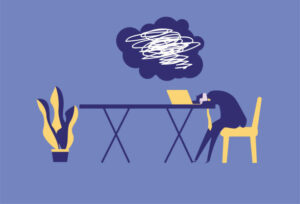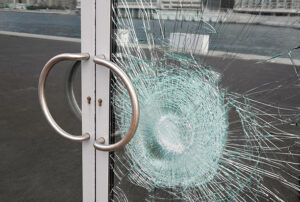
Millennials are taking over the workforce
Millennials are officially taking over the workforce. A study showed that by 2023 millennials will make up 46 percent of employees With a combination of younger professional, more casual work attire is becoming the norm, which can make it even harder to know what to wear in a professional setting. According to a survey by Salary.com, only 55 percent of workplaces have an office dress standard. So, what is acceptable and what isn’t? Dismissed for not dressing properly is topic worth reading.
Employee / workers rights
I remember years ago clashing with the immigration minister at the time over the rights of employees to wear moccasins to work. (the minister backed down). Being involved in a Fair work matter over the wearing of a ring in your eyebrow (we lost). Now’s a good time to comment on the topic. We have in recent weeks had several dismissals over refusing to dress to the company required standard on returning to work after working from home for the last 2 years.
Is it laziness?, or does it even matter? Or as a group member you have to fit in? I hate to mention it, but we also had some calls relating to hygiene issues of employees (cloths not washed) returning to the workplace after the extended lock downs. Dismissals for the failure to fit in is particularly high in the probation period. Who wants to tell a colleague they smell, nobody

Types Of Office Dress Standards
There are generally four types of corporate dress standards : Business formal, business professional, business casual, and casual. The standards have certainly changed from a generation ago where it was compulsory to wear a tie. Employees were dismissed for not dressing properly, have tie on, suit etc. These sort of standards still apply in a lot of law, accounting and consulting firms.
Business Formal
This is the highest level of professional dress attire and it means tailored suits and ties for males, and a pantsuit or skirt suit paired with conservative accessories and shoes for females. Employees are expected to maintain a high standard in their appearance.
Business Professional
This is a step down from business formal, but it’s still conservative and traditional. You will start to see more flexibility in colors and patterns in business professional. Males tend to wear suits and ties with more patterns and colors, and females tend to wear a suit or skirt, top, and jacket paired with jewelry that is more noticeable—such as chunky watches or statement pieces.
Business Casual
However, if your employee handbook says that you can dress business casual, that means you don’t have to wear a suit, pumps, and stockings every day. However, you should still keep a certain level of professionalism, no matter how casual the dress code is. Males tend to wear button-ups while females can wear skirts, slacks, or khakis with a cardigan or jacket. Employees are allowed more freedom with their jewelry and other accessories.

Casual
As the least formal, the difficult part might be making sure you are still maintaining a level of professionalism. Clothes should still be pressed, neat, and appropriate for the type of work you do. For males, you can expect casual pants and slacks with collared polos or crew-neck sweaters. Females have the freedom to wear nicely-fitted tops and blouses, slacks or skirts. Fun patterns and colors are acceptable with a casual dress code.
Model What your Boss Wears when you join the company
When starting a new job, it can be tricky to figure out what is acceptable and what isn’t. One way to master a casual dress code is to mirror what your boss wears. Use him or her as a guide for what you should be wearing. If they dress more formal then that’s a clue that you should, too; however, if they’re more business casual, that can help you decipher what to wear to work.
This is no different if the boss who gets in early, you get in early. If they work back late you work back late. At least until you figure out the culture of the workplace. This is what career driven employees do. If your contract says 38 hours and that’s what you want to do, that’s your right. You should not be dismissed for excising a workplace right.
Avoid Things That Make You Look Disheveled
Regardless of how casual your workplace attire is, you don’t want to come into work looking like you were rushed that morning. you look hungover, unshaven, it might be trendy, however at the end of day you have a job to do. Don’t develop the perception you can’t do the job. It brings unnecessary attention and may start heading down the unfair dismissal path.
Take the time each morning to put yourself together. If you’re wearing clothes that are wrinkled or dirty, it could change people’s opinion of you. Don’t develop this attitude of you better than everybody else, so I dress how I want. If that’s shorts, thongs, sunglasses, so be it.

Staying Professional While Comfortable
If your office doesn’t have a dress standard, you still shouldn’t be wearing clothes that you would wear to go exercising or lounging. Unfortunately, that means leave those leggings at home. Certain standards should always be kept. For example, jeans might be an acceptable item to wear in an informal workplace, but they must be in good condition. It’s most likely a good idea to stay away from pants that are ripped, tattered, or frayed. Keeping certain professional standards in mind can help employees look well-groomed while staying comfortable when following a casual dress code at work.
When you first join a new workplace, it’s better to err on the side of caution and dress too formally in the beginning until you fully understand what the dress code is. As long as you’re wearing clean, neat, and professional clothing, it’s hard to go wrong, regardless of what type of dress code your workplace has.
And What Should I Wear While Working From Home?
This really depends on your position and your employer. You should get an idea on how to dress while working from home by taking a look at how other colleagues dress while doing the same. Is your manager also working from home? How does he or she dress? If not, remember that asking for information to your manager is not something to be ashamed of. It will, on the contrary, show that you care about being integrate in the company culture.
In the majority of the cases, it is recommended to avoid pajamas and clothes that are too “relaxed” (tank tops, robes, nightwear in general) and, in case you have to be in contact with customers, it’s best to stick to the business casual attire that we discussed previously in the article. Developers, “back room” employees, office managers and, in general, people that do not have to be in contact with customers can get away with a more “casual” look.
Some employees have been doing their zoom conferences whilst still in bed, hair a mess, pajamas on. Employers can take offence at it, everybody is making an effort, except you. This is even if your for filling your role. There have been dismissals for this conduct. We recently had a unfair dismissal claim where the employer dismissed a employee working from their bed, eight hours a day. Arguing this is breach of occupational health and safety because they were not sitting in a ergonomic chair as required in the office
Mindful of others

Do we have to look the same?
Whilst part of the article is dress compliance, we don’t all have to look the same. I remember a phone call years ago where a young employee rung me, because the other staff laughed at her over the dress she was wearing. Now she was spending all her pay on clothes. I said don’t fall that, its a form of bullying. I indicated it should be reported. Nobody wants to see people resigning. unnecessarily. Or her performance drops where she is in the position of being dismissed.
In Australia some 30 percent of employee have been born overseas. So the consideration of national and religious beliefs have to be considered. This is where there may be conflict particularly around the issue of dress standards when dealing with customers and occupational health and safety. There is still a level of intolerance in some Australian workplaces regardless of what the discrimination laws state.
Casual and part time employees.
Should employees who don’t receive the same pay as full time employees have to spend the same amount of money (uniforms, presentation to the public) as higher paid colleagues? It depends on the circumstances, the role, the position. Some employees who refused have been dismissed for unable / refusing to comply. Why would you spend money you really don’t have to comply on a dress standard when if you an casual employee there is no guarantee of future work.

Phone calls we regularly receive
An employer requires female staff to wear high heels as part of a dress code but places no footwear requirements on male employees or merely requires them to look smart. This is likely to constitute direct discrimination on grounds of sex because there is not an equivalent standard imposed on male staff. (we get these sorts of enquires regarding dress standards between male and females in night clubs and pubs every week). It may also amount to indirect discrimination against employees with a disability, where heels could exacerbate any difficulties with their mobility, or for those who are visually impaired, where walking in heels can pose an extra risk of falling.
A company requires their receptionists to dress smartly, to portray a positive public facing image. This would be lawful, as there are no gender specific requirements for men or women. An employer requires all employees to wear smart shoes, but does not require female employees to wear high heels. This would be lawful.
A clothes shop expects staff, both male and female, to dress in a provocative or revealing fashion. This might not amount to direct discrimination since it imposes equivalent requirements on men and women. However it could contribute to an environment in which employees may be vulnerable to unwanted sexual attention and harassment. this may be sex direrimination or sexual harassment
Dress code and harassment
In the clothes shop example above, a female shop assistant makes a complaint that the dress code amounts to harassment. Shortly after, she is dismissed from her job, with no valid reason given. This is likely to constitute unlawful dismissal for excising her workplace rights. This is even if the employer did not say it was because of her complaint. This would be the case even if the shop assistant’s actual harassment complaint was not upheld. A general protections application for adverse action can be made to the Fair Work Commission.

Conclusion to Dismissed for not dressing properly
I hope you enjoyed the article, it was brief, and to the point. We are A Whole New Approach P/L, leading workplace advisors, (we are not lawyers). All matters relating to the Fair work Australia, including, workplace harassment, toxic workplace culture, sick leave. Anything around workers rights, employment rights, abandonment of employment type concerns, call us now
Call 1800 333 666
We are based in Victoria, we work in all states
Articles similar to Dismissed for not dressing properly
Is working from home really worth it






